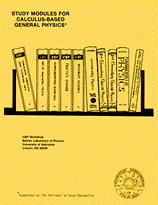Instructional Materials in Physics and Astronomy
Date of this Version
1975
Abstract
Charles Augustine de Coulomb (1736-1806) designed his famous experiment to measure the force relationships between charged bodies: Coulomb's law is the resulting empirical statement. Gauss' law (Karl Friedrich Gauss, 1777-1855), which you will learn in this module, has a more obscure origin. It was originally a mathematical theorem. Scientists in Gauss' nineteenth century were much more inclined than we are today to equate mathematical correctness with physical correctness. When it was realized that Gauss' (mathematical) theorem could be applied to the electric-field concepts of Faraday to produce Gauss' (physical) law, this extension was eagerly accepted. The origins of the law, however, continued and still continue to lie in the domain of pure logic; therefore they may be somewhat inaccessible to you in beginning physics courses. Your texts and this module will use both physical and mathematical arguments and examples to help you achieve a mastery of these ideas and their applications.



Comments
From Study Modules for Calculus-Based General Physics
Copyright © 1975 CBP Workshop, University of Nebraska–Lincoln.
Reproduction rights granted.